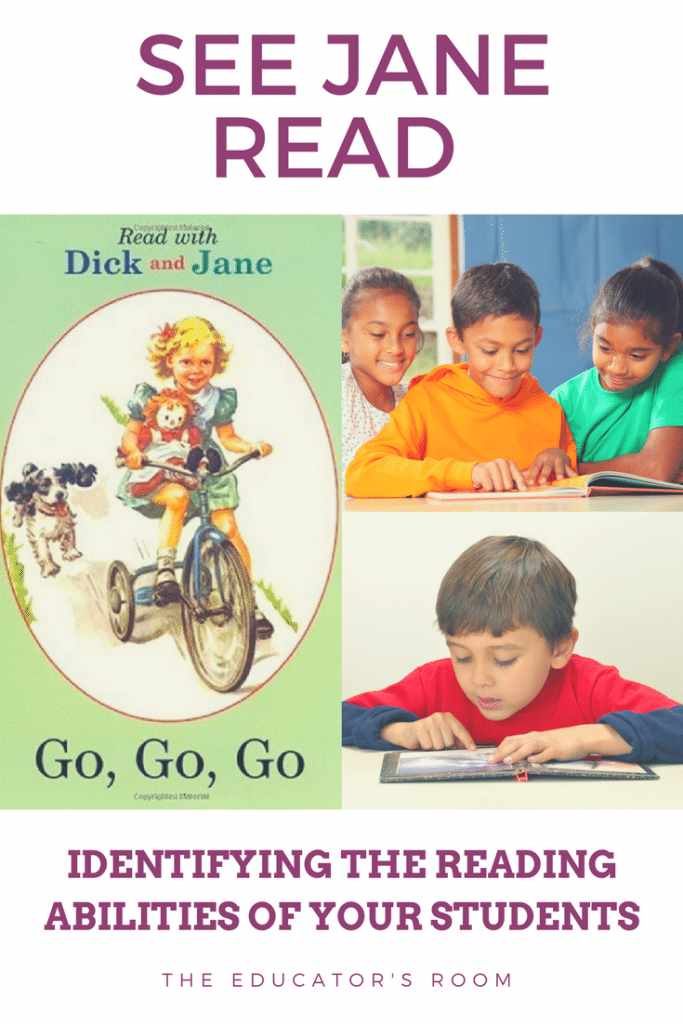[fusion_builder_container hundred_percent=”yes” overflow=”visible”][fusion_builder_row][fusion_builder_column type=”1_1″ background_position=”left top” background_color=”” border_size=”” border_color=”” border_style=”solid” spacing=”yes” background_image=”” background_repeat=”no-repeat” padding=”” margin_top=”0px” margin_bottom=”0px” class=”” id=”” animation_type=”” animation_speed=”0.3″ animation_direction=”left” hide_on_mobile=”no” center_content=”no” min_height=”none”]

Who remembers the primers? “See Dick.” “See Dick Run.” “See Dick Jump.” Who remembers basal readers? Who remembers whole language? Reading instruction has used Hornbooks, basals, phonics, animated alphabet, whole language, balanced literacy, group read aloud, round robin, small group lessons, and yet we still have a group of students we miss. Identifying these students and then using direct, explicit instruction is the key to helping them become fluent readers. This is the first part of a group of articles in which I will help you understand how to identify weakness and strengths in your students’ reading and then give you strategies for helping and extending your students as readers.
Reading is man-made, created, something that has to be learned and therefore can be a struggle for some. As educators, we have had many tools and resources thrown at us for this purpose. Reading instruction has changed and morphed over the years, swinging between two pendulums of phonetic versus meaning. I found an interesting timeline on The Phonics Page.
Students who are reading below grade level at the end of fourth grade will continue to struggle throughout school. This is not a death sentence, however. There are things that can and should be done and many successful programs to help with this cause. Identification is the first step. Are students reading below grade level? Which students struggle with fluency? What are their errors? How well do they comprehend? The answer to these questions will allow teachers to find the direct instruction that will meet the needs and fill the reading gaps for struggling kids.
There are many programs that can be used to assess student reading: Easy CBM, AIMS Web, Dibbles, Jerry Johns, and most reading programs come with reading level assessments. This Free Reading site provides a list and links to many reading assessments. When thinking of the reading level of your students you need to look at three things: fluency, reading accuracy, and comprehension. Here is a chart that will provide you with general reading levels and fluency levels. Our district uses the lower scores on the fluency. Deciding on scores and passages to use is a discussion best had in your grade level teams and between grade levels so you have consistent expectations. The conversation is more important than the numerical outcomes. When you select the passages to use for testing start with the grade level the student is in. Eighth grade, use an eighth-grade passage. Sixth grade, use a sixth-grade passage. It is important to get a baseline to compare growth.
Reading Fluency Check—Select a grade level passage from one of the above sources or from a source you already have. Have all students read the same passage and time them individually for one minute. Call the student to a quiet area of your room (or if you can sit outside in the hallway that may be better for timid readers). Tell them the title of the passage. “Today I am going to listen to you read. I need to know how quickly you are reading so I am going to time you.” “I am going to stop you after one minute. You may start when you are ready.”
Start your timer when they read the first word of their passage. You need to score the passage as they read. There are many ways to score a fluency assessment. Provide a copy of the passage for the students and have a separate copy of the passage to mark. The important thing is to mark the words that were read incorrectly. You can do this by simply making a mark through the word or you can record what they read. Write down what is said for their substitution or insertion and cross out omissions. This allows you to get a picture of the reader. If you are just starting with running records (recording information as students read) simply circle or cross out the incorrect words. Stop the student after one minute or mark the passage when one minute is up. An error is any word that was not read, replaced, mispronounced, or read incorrectly. Inserted words count as one error each. To find a score, take the total number of words read and subtract the errors. This gives you a score for words correct per minute. Using this information will help you understand where students’ fluency needs and strengths are.
Reading Accuracy Check—This information can be calculated from the same test you gave for fluency. If you decide to use a different passage and listen to students read a second time be sure the passage is on grade level and all students read the same passage. Count the total number of words in the passage that were read and divide this by the total number of words in the passage. Insertions do not count against the score. You simply count the words that were read incorrectly or skipped and divide that by the total number of words printed on their page that they read in the 1-minute timing. If there are fewer than 100 words you will want to have the student read more to gain a more accurate score. You can do this by simply stopping the timer at 1 minute when listening to fluency and marking that part on your score sheet and then letting them finish the passage. This would apply to students who have a very low fluency score. If students are reading with 95% accuracy and above the level is at their independent reading. This is where you want students to be performing to gain information from text and read to learn. If students are reading with 90% to 94% accuracy this is an instructional level. This is where their reading instruction should be taking place. If students are reading at 89% accuracy and below the text is too difficult and they do not comprehend the text as they read. This gives you information about the level of books they should be reading independently, checking out from the library, and lets you know if they are able to read classroom work without assistance.
Reading Comprehension Check—This should give you information about what students understand at basic and advanced levels of text. Find a book or chapter that has questions pre-written. There are many programs and resources available. Students need to read the book, chapter, or passage and then answer the questions. These are scored and students who perform above 80% comprehension are demonstrating the understanding of the materials. You can also use a maze passage. This is a reading passage with important words omitted. Students are given a choice of three words. They select the word that best completes the sentence. When checking reading comprehension you want to do this on an instructional level. If students are unable to read more than 90% of the text, their decoding skills are most likely interfering with their comprehension.
To teach your students to read you must know where they are. It is important to understand their current instructional reading level (accuracy and comprehension combined) as well as their fluency level. This article should allow you to gather the needed information to see where your students are. The students below grade level will need skills review and help with learning to read. The students at grade level need meaningful work to practice their skills and push their comprehension. The students above grade level need extension activities and ideas to stretch their comprehension into the upper levels of knowledge.
So, what do you need? Have a conversation with your grade level team or a colleague on passages that would be meaningful at your grade level. Get copies of the reading passage, a sharp pencil or two, and a timer. Call each student to read for one minute and record their efforts. Score your passages and make a list of students. Who is on grade level? Who is above grade level? Who is below grade level? Knowing where you are will pave the path for what you need to do.[/fusion_builder_column][/fusion_builder_row][/fusion_builder_container]






Link to free reading site mentioned here not found (error message)
We just fixed it! 🙂